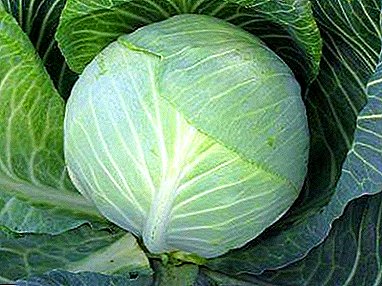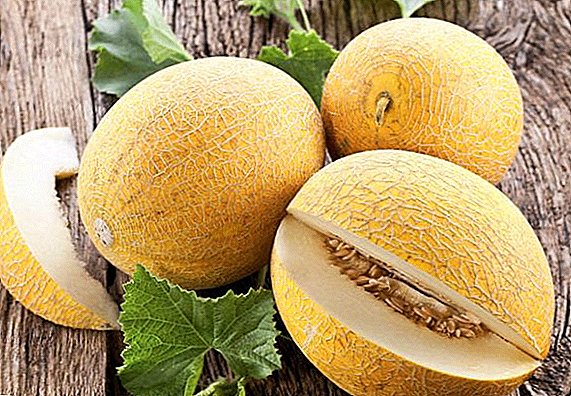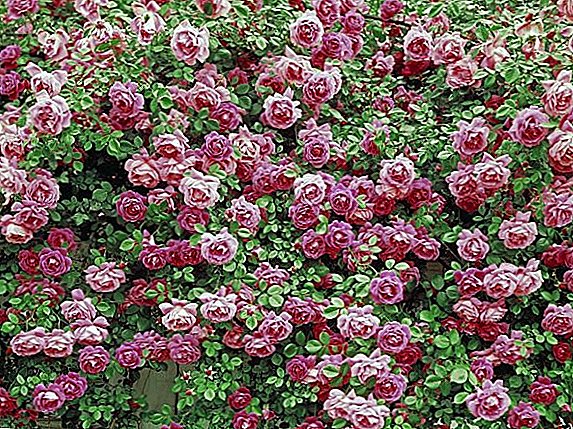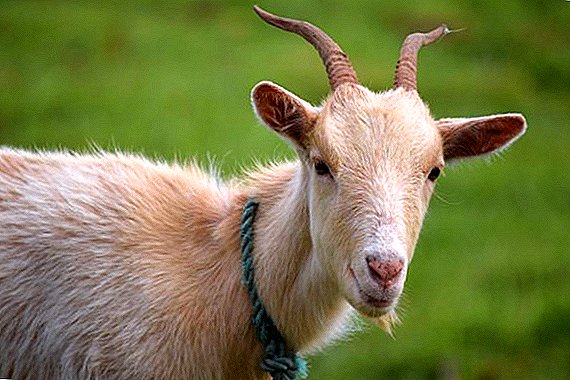 Usually goats are bred for the purpose of obtaining milk, as it is more nutritious and healthy than cow. Naturally, if an impurity is detected in the milk, its quality is significantly reduced, and with it the profitability of the business decreases. One of the most frequent impurities in milk is blood. Find out why it appears and how to prevent it.
Usually goats are bred for the purpose of obtaining milk, as it is more nutritious and healthy than cow. Naturally, if an impurity is detected in the milk, its quality is significantly reduced, and with it the profitability of the business decreases. One of the most frequent impurities in milk is blood. Find out why it appears and how to prevent it.
Why a goat has milk and blood: the main reasons
The presence of blood in milk is associated with udder problems. It may be a mechanical injury or an infectious disease.
Mastitis
The most common cause of pink milk is mastitis - an inflammatory process in the mammary gland of an infectious nature. It usually proceeds without pronounced symptoms, which makes this ailment quite dangerous, since it is difficult to immediately suspect it. Signal about the appearance of the problem just may be dyeing the milk in pink.
Did you know? Goat domestication occurred in the Middle East 9,000 years ago. The ancestor of the modern domestic goat is considered to be a bezoar (bearded) goat, which still lives today.
Related symptoms
Besides the fact that a patient with mastitis goats has milk mixed with blood, the following symptoms are also observed:
- decline in milk yields;
- milk quickly sours;
- milk is difficult to milk;
- swollen udder (often not evenly);
- the temperature of the udder is higher than the temperature of the rest of the goat's body;
- palpation of the body palpable seal;
- the animal loses its appetite;
- milk contains mucus, flakes, clots.

Causes of disease
The causative agents of mastitis are bacteria:
- Staphylococcus aureus;
- groups of streptococci (Str. agalactiae and Str. dysgalactiae);
- Bacillus cereus;
- Corynebacterium bovis;
- Pseudomonas aeruginosa;
- Proteus vulgaris;
- Klebsiella oxytoca;
- E. coli.
But not only these bacteria are able to provoke the development of the disease.
Did you know? According to the Food and Agriculture Organization of the United Nations, in 2011, more than 924 million goats lived in the world.
There are other reasons:
- colds (due to dampness, drafts, low temperature in the barn);
- poor housing conditions (damp bedding, poor sanitation);
- violations of the milking technique (lack of hygiene, lack of massage, improper use of the milking machine);
- udder injuries, nipples;
- diseases of the reproductive system;
- violation of the livestock reproduction system (early coverage, a small gap between the genera);
- violation of livestock (the neighborhood of sick and healthy individuals).
Treatment
First of all, the sick individual must be isolated from the rest to avoid the massive development of the disease. She is provided with the best conditions of detention: a warm, clean room. Litter change and cleaning of the room is carried out regularly. Succulent fodder and mixed fodder are excluded from the diet. Drinking is limited to a minimum and is given only warm.
The following treatment options are commonly used:
- The course of antibiotics intramuscularly, along with drugs that are introduced into the udder.
- Novocainic blockade in combination with antibiotics.
- Folk remedies, only if the ailment is at an early stage (calendula-based ointment for grinding, chlorophyllipt with novocaine for administration to the udder, ichthyol ointment).
Important! The method and scheme of drug treatment is established by a veterinarian after a thorough examination and testing.
Stagnation
Congestive processes most often occur in young goats, pervorodok. They may occur due to impaired blood circulation and lymph circulation in the mammary gland during the last term of pregnancy. Manifested by an increase in udder, lack of pain during palpation. The body feels like a dough.
Violation of content rules
If the animal is kept on a concrete floor without bedding and in dampness, then with frequent milking, udder edema immediately occurs. Milk stagnation occurs, as a result of which the parenchyma (glandular tissue producing milk) is injured. The process connects microflora, which destroys the capillaries, because of which blood appears in the milk.

Improper milking
Unwashed hands of the milkmaid, the lack of hygienic procedures for the udder before and after milking, inept milking, which causes injury to the organ, provoke the development of the inflammatory process, the appearance of edema, mastitis. As a result, the milk turns pink.
Wrong diet
Building a diet on concentrates, the presence in the menu of very moist greens or vegetables causes a malfunction of the gastric scar. There is a fermentation process. Microorganisms that take part in it, spread throughout the body and, getting into the udder, irritate the parenchyma. The result is mastitis.
Important! Touch up the milk can and eaten on pasture plant (buttercup, euphorbia, morning)
Udder injury
In a barn or pasture, a goat can easily bruise the udder, chop or prick it. Such an injury is accompanied by an inflammatory process, which often turns into mastitis. Usually, if the udder was injured just now, the milk will turn bright red. When hematomas begin to form, the bright color will fade and clots will appear.

Preventive measures
To prevent the disease by observing the rules for the maintenance and care of animals:
- Do not keep many goats in the stall. One adult needs a minimum of 1.5 m² of space. Space is needed in the pasture.
- Make sure that there are no puddles in the way of moving the herd between the house and the range, excrement in different forms, so that the animal does not pick up some kind of infection or does not catch a cold.
- Wash your udder with warm water before and after milking. After water procedures, wipe it dry with a soft cloth. Also disinfect hands and milking machine.
- Treat the udder with disinfectants and massage the teats before and after milking.
- Milking procedure is carried out strictly at the same time, minute per minute.
- To increase the productivity of the dairy individual, you need to milk it 3-4 times a day.
- If the animal is restless, it is best to milk it during the meal.
- In the room where goats live, in the summer time the temperature should be maintained at + 18 ° С. In winter, the thermometer should not fall below + 6 ° C.
- A goat per day should receive 2.5-3 kg of roughage, 2 kg of hay, 2-3 bundles of woody branches, not more than 1 kg of corn, bran, barley, green fodder, 6-10 g of salt.
- It is necessary to feed an animal 3-4 times a day, preferably at the same time.
- On the day the animal needs up to 2.5 liters of clean warm water.
- Peat or straw should be used as bedding. It should be replaced regularly.
- Even in winter, the goat should be in the fresh air.
Also read what to do if the goat stopped giving milk.
Can I drink milk with blood
Milk with blood impurities is not suitable either for humans or for goats. It may contain pathogens, its chemical composition is changed. Boiling procedure can kill harmful microflora, but is not able to return the lost nutrients.
So, the blood during milking can appear as a result of the disease, and due to improper maintenance and care of animals. Therefore, it is very important to monitor the condition of the room in which the herd lives and for its diet.












